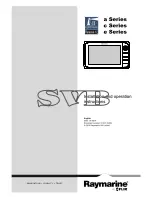
BA 5230 en 04/2011
9.2.1
Leakage / leaktightness
In DIN 3761 information is given on the subject of leakage on gear units. Based on this and building on the
extensive experience gained at Siemens and other FVA member companies, brief descriptions, required
measures and notes on this subject are listed in the following overview.
Table 14:
Notes on the leaktightness of radial shaftsealing rings (RWDR)
Condition
Description
Measures
Notes
Leaktight, dry
No moisture to be seen on
radial shaft-sealing ring.
None
Leaktight, damp
Film of moisture formed
functionally in the area of
the sealing edge but not
extending beyond the
bottom side of the radial
shaft-sealing ring.
Clean carefully only, if dirt
adheres; observe.
The radial shaft-sealing
ring often dries by itself in
further operation.
No reason for complaint
Leaktight, wet
Moisture film extending
beyond the bottom side of
the radial shaft-sealing
ring but not dripping.
Wipe away with a clean
cloth; observe.
The radial shaft-sealing
ring often dries by itself in
further operation.
No reason for complaint
Measurable leak
Small trickle to be seen on
the bottom side of the
radial shaft-sealing ring,
dripping.
If necessary, change
radial shaft-sealing ring;
identify possible cause of
radial shaft-sealing ring
failure and rectify.
May be a reason for
complaint; one drop of oil a
day is acceptable.
Short-term leak
Short-term failure of the
sealing system.
Wipe away with a clean
cloth; observe.
E.g. through small particles
on the seal edge, which
can be removed again in
further operation
No reason for complaint
Apparent leak
Temporary leak.
Wipe away with clean
cloth.
Due mostly to excessive
grease filling between seal
and dust lip or oil
secretions from the grease
filling of labyrinth seals.
No reason for complaint
Escaping oil mist from a ventilation valve or a labyrinth seal is functional and therefore
not a
reason for complaint.










































